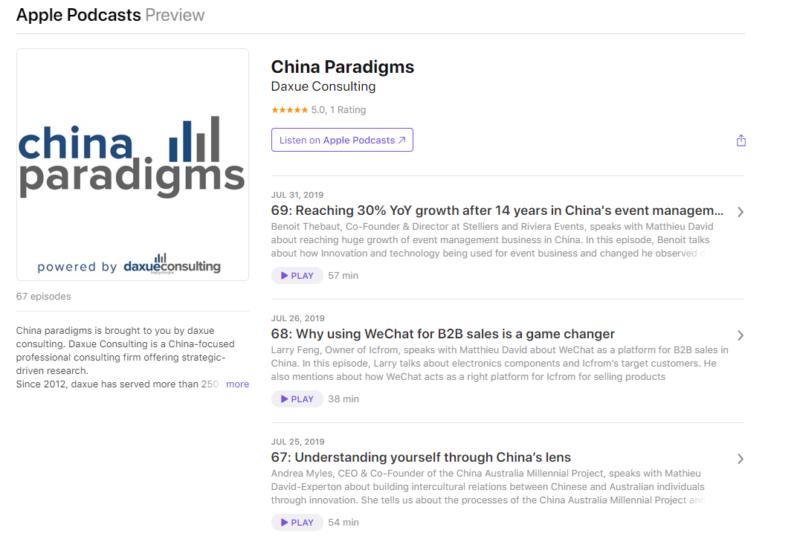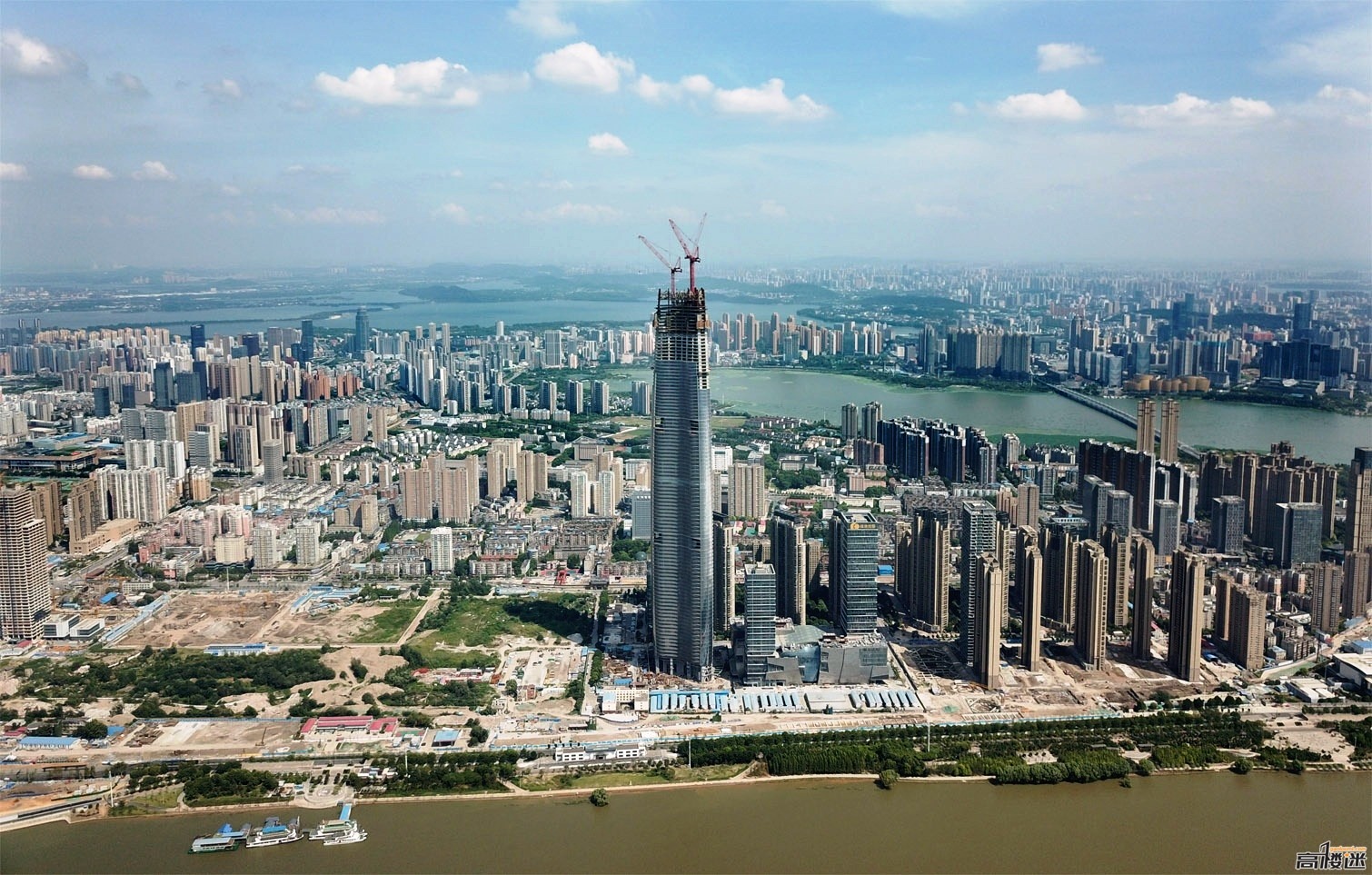For many globally, Wuhan has recently been put on the map from being the epicenter of the COVID-19 pandemic. However, even before COVID-19, Wuhan was newsworthy for its economic importance and key roles in transportation, education, industry and politics.
Situated in central China on the middle reaches of the Yangtze River, Wuhan commands one of the most strategic locations of any city in China. Unsurprisingly, Wuhan’s economy is one of the most important in China, worth nearly 1.5 trillion yuan in 2018. By this measurement, Wuhan’s economy ranks as the 8th largest city economy in China. More importantly, Wuhan is the largest economy in central China and one of the largest inland city economies.
Measured by purchasing power parity (PPP), Wuhan’s economy grew to nearly $250 billion in 2018. This makes the city worth about as such as the entire national economies of Finland or Ethiopia. The city’s GDP per capita (nominal) of nearly $25,000 makes it one of the most prosperous in Mainland China. These high economic indicators drive spending and growth in rising industries.
Acting as a crossroads of infrastructure development, higher education and IT, Wuhan’s economy is quickly becoming one of the most important in China. With an economy that has bounced back quickly from the coronavirus pandemic, Wuhan is worth understanding better.
Summary of the GDP of Wuhan
The GDP of Wuhan reached RMB 1,484 billion in 2018 with a YOY increase of 10.7%, accounting for 1.6% of China’s total GDP in 2018. Ten years prior, the GDP of Wuhan was RMB 396 billion, accounting for 1.3% of China’s economy. With an overall GDP of almost RMB 1.5 trillion in 2018, Wuhan’s economy is the 9th largest in mainland China. The economy of Wuhan increased nearly four-fold in ten years, due to special industrial zones, foreign investments and a pool of educated workers.
Why Wuhan is developing faster than other Chinese cities
With its perfectly centered location in Central China, Wuhan is sometimes referred to as the crossroads of China. Two major rivers (Yangtze & Hanjiang) flow through Wuhan, cutting the city into three distinct districts, Wuchang, Hankou and Hanyang. These large rivers connect Wuhan to other markets upstream and downstream. A web of highways and rail lines connect all three districts of the city to other cities major cities across China.
With more than ten million people living just in the three central districts, Wuhan is the largest city in central China. It is increasingly a regional hub for commerce, politics, industry and education. The area has grown from a collection of small commercial ports in the Qing Dynasty to a metropolitan area with a population of about 20 million.

[Graph showing the growth of Wuhan’s GDP between 2007 and 2017, which quadrupled during the period and still continues to grow faster than other large cities across China. Source – National Bureau of Statistics]
In addition, the city’s economic growth has been substantial over the past few decades. Between 2007 and 2017, the economy of Wuhan quadrupled in size, while its GDP per capita grew from RMB 35,000 in 2007 to 135,000 in 2017. Between 2017 and 2018, Wuhan’s economy outperformed other Chinese cities of similar size in growth rate, such as Hangzhou, Suzhou, Tianjin and Chongqing.
As it is growing faster economically than most of cities ranked above it, Wuhan offers companies a bright economic outlook. By illustrating Wuhan’s special industrial zones, high level of accessibility, foreign investment and advanced educational background, this report will show foreign companies what advantages Wuhan has to offer.
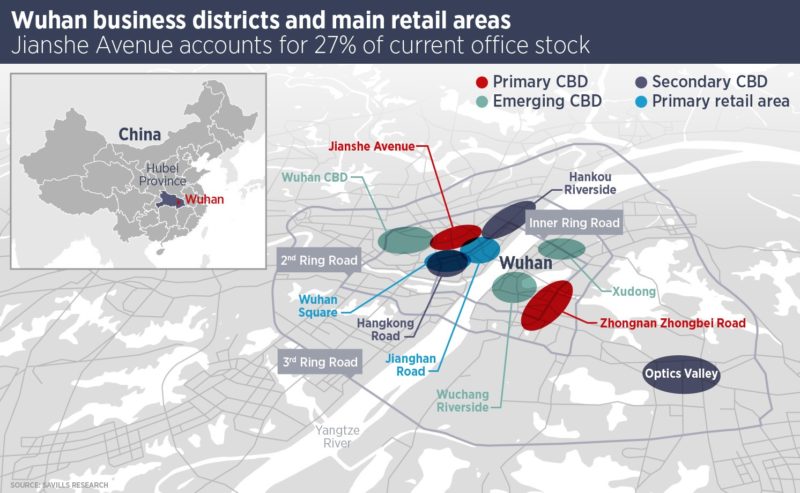
[Map showing the location of central business districts and Optics Valley within the Wuhan metropolitan area. Source – Savills Research]
The role of Chinese special industrial zones in the development of Wuhan’s Economy
Due to its position at the confluence of two economic models, China is famous for creating special economic zones and special industry zones to cater to special markets in designated spaces. Special industry zones are areas that are designated by the national government to protect one certain industry from encroachment by others within its zone. These areas are increasingly promoted throughout mainland China to bolster GDP growth and target growth in certain sectors.
One example of Chinese special industry zones specific to Wuhan is the Donghu New Technology Development Zone. Also called Optics Valley, Donghu New Technology Development Zone was established in 1988 to promote the development of high-tech industry in China, especially in regards to fiber optics. Today, Optics Valley is home to both startups and large multinational corporations who were lured by the area’s financial incentives and talent base. A few notable companies that have a large presence in Optics Valley are Motorola, Huawei and Lenovo. According to statistics from the provincial government, only eight of the many companies invest RMB 40 billion in this special industry zone every year.
New special industrial zones in Wuhan
Another Chinese special industry zone that has been key to economic growth in Wuhan is the Wuhan Economic and Technological Development Zone. Located across the Yangtze in Hanyang District, this special industry zone caters mostly to automotive and electronics companies. Constructed in the early 1990s, the area was at the time located on a rural parcel of land to the southwest of the main urban area. Today however, the area is connected to the rest of the city by a vast network of boulevards, highways and metro. Over the years, Wuhan Economic and Technological Development Zone has attracted a few notable companies, such as
In September of 2019, the zone announced developmental contracts with a few more notable domestic companies, including Jingdong and Jingzi.
Two other special industry zones in Wuhan worth mentioning are the Wuhan Export Processing Zone and Biolake. The former caters mostly to processing and manufacturing, trade logistics and producer services, attracting companies such as Dongfeng-Citroen with preferential tax and trade policies. The latter is located near Optics Valley in Wuchang and caters mostly to medical research. Since being established in 2008, Biolake has attracted companies such as Humanwell Healthcare and United Imaging Healthcare in addition to working with an array of local hospitals.
Chinese special industry zones in Wuhan mentioned in this article are just some of the zones making Wuhan’s economy more vibrant and robust. Foreign companies looking at Central China as a place to expand their business can look forward to a highly developed network of talent pools and increased supply-chain efficiency in conjunction with these zones.

[A view down a side street in the former concessions of Hankou District. Formerly split into concessions of various European nations, the city has now grown up quickly around the old central districts. Source – 睿睿]
How Foreign Investment in China has catapulted Wuhan’s economy
The relationship between France and Wuhan can be traced back to the Qing Dynasty, when Hankou was an important maritime trading center with European countries. During the late 19th century, Hankou was one of a few areas in China that opened French concessions.
Nowadays, more than 100 French companies that have invested Wuhan’s economy. Companies that have been long established in the city have recently been announcing plans to expand their operations. One such company, Electricfil, has announced plans to invest in a second factory in the city at a cost of RMB 1 billion.
Many companies that have enjoyed access to Wuhan’s economy over the past few decades have been concentrated in the city’s automobile and technology sectors. More than 30 French companies have set up offices in the Wuhan Economic & Technological Development Zone, sinking some $5 billion worth of investment into the city’s economy.
Incentives for foreign companies to contribute to Wuhan’s economy
In 2017, an industrial park in Wuhan announced incentives for French companies to set up in research and development facilities in the city. So far, Renault and Electricite de France, two French companies, have taken the industrial park up on their top offer of RMB 5 million.
Despite being the largest investor in Wuhan’s economy, French companies are just one group of companies investing in Wuhan. Wuhan’s increasing ability to attract investment is a testament to the advantages that the city’s economy possesses.
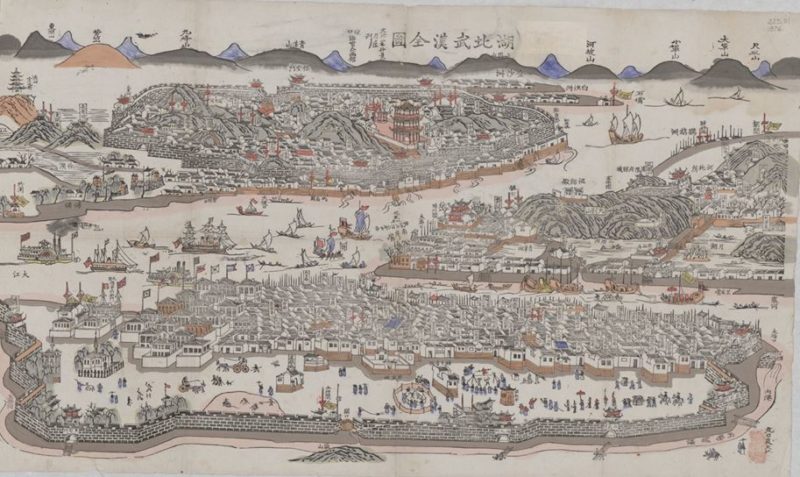
[Qing Dynasty map showing the middle reaches of the Yangtze River as it passes through Wuhan, which was at the time called Hankou. The concessions of various European nations can be seen in the foreground. Source – National Library of Australia]
How Wuhan’s position as a Chinese educational hub is shaping the economy of Wuhan
With some of the best universities in mainland China, Wuhan has been ranked as the 3rd largest educational center in China. As an increasingly important education hub in China, Wuhan has attracted nearly 300,000 university students, one of the largest concentrations of college students in mainland China.
Wuhan’s position as a Chinese educational hub is mostly due to the presence of a few highly ranked schools, such as Wuhan University, Huazhong University of Science and Technology and China University of Geosciences. In addition to these leading universities, there are 17 other institutions of higher learning in the city.
In addition to an array of highly ranked universities, Wuhan has a number of high schools that have international departments aimed at foreign exchange with high schools in other countries. Notable high schools with such programs are Wuhan No. 1 High School and Hongshan High School.
One of most obvious benefits of expanding a business in one of China’s educational hubs is that the local population is highly educated in relation to other regions in China, even with other cities of a similar size. Wuhan’s status as a Chinese education hub helps the city to attract companies that need such highly skilled workers.
How accessibility within China has helped the economy of Wuhan
Part of what makes Wuhan’s economy so successful is its centralized location in the middle of China’s populated eastern half. The city however also benefits from high levels of accessibility and mobility. With this highly developed infrastructure, Wuhan’s economy has been able to benefit from the city’s infrastructure initiatives, whether it be maritime, air, rail or metro.
Ideally positioned for maritime trade
Situated on the banks of the Yangtze River about halfway between Shanghai and Chongqing, Wuhan has always enjoyed economic benefits from the commerce that the river brings. With direct access to maritime trade, the economy of Wuhan has held an advantage over other inland Chinese cities. Today, Wuhan has the largest inland port in mainland China, handling more than 40 million tons of cargo in 2013, making it busier than some naval ports.
Heavy investment in air transport
In addition to maritime trade links, Wuhan is also increasingly invested in air transport with one of the largest and busiest airports in central China. Wuhan’s Tianhe International Airport has direct flights not only to most major cities in East Asia, but also to European capitals, such as Paris, Rome, London and Moscow. In addition, there are direct flights between Wuhan and New York, San Francisco, Sydney and Istanbul. Upgraded in 2017, the airport allows travelers entering mainland China to transit visa-free through the airport for up to 144 hours.
Rail lines link Wuhan to the whole middle kingdom
Nicknamed the hub of China, Wuhan is crisscrossed by a dense network of rail lines and expressways that link it to the rest of the nation. Direct high-speed train services can get passengers to Beijing, Guangzhou and Shanghai in the same time a flight can. A local network of intercity high-speed railways also act as a high-speed metro system, connecting other large cities in the province to Wuhan. In addition, a dense network of freight railways connects the city and it’s ports to all corners of China.
Metro with 21 lines
Finally, the development of the Wuhan Metro has provided further benefits to mobility within the city. Opened only in 2004 with one line, the system has grown rapidly over the last 15 years and especially in the last five. Hailed as one of the most successful metro systems in China due to its rapid expansion, the metro system now has nine lines and 340 kilometers of track. The city’s metro system shows no signs of slowing down its growth of expansion either, with eight lines currently under construction.
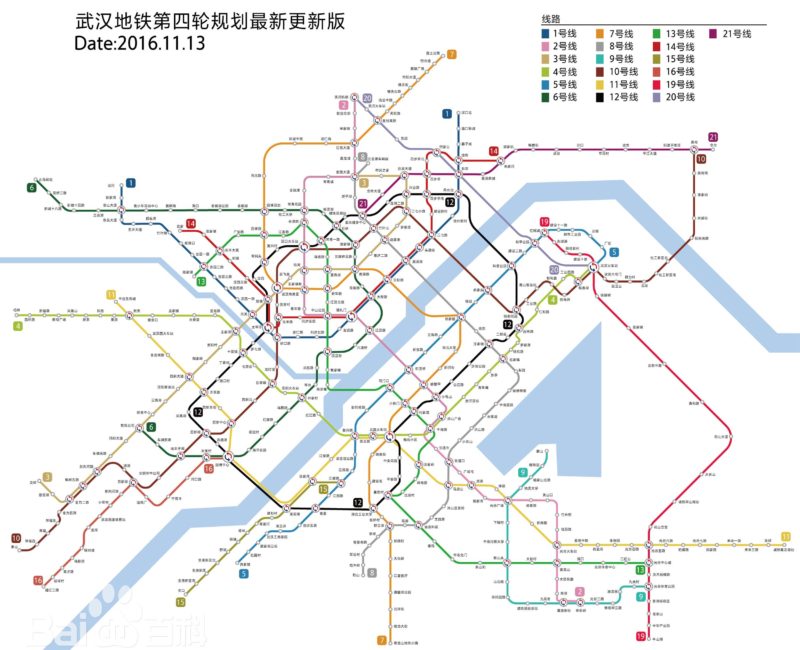
[Map of completed, under construction and approved lines in the Wuhan Metro. Opened in 2004, the system has grown from one line to encompass more than 340 kilometers of track today. The system has been hailed as one of the most successful and comprehensive in mainland China. ]
Wuhan’s increased accessibility within China has provided it with a leading edge over other cities in terms of economic growth. With a highly developed maritime, air, rail and subway network, the city is better able to cater to business that seek these services. Foreign companies that are looking at Central China can rest assured that the city is well connected to their other branches across China and their home offices.
What Wuhan’s economy has to offer foreign companies
For foreign companies looking to expand in China, the temptation to set up shop in coastal cities is strong. However, many cities farther inland offer strong potential for economic benefit.
As shown, Wuhan’s economy offers strong incentives to foreign companies as it due to the city’s rapidly growing economy, its establishment of various Chinese special industrial zones, its role as a Chinese educational hub, the city’s highly accessible location and its willingness to cater to foreign companies looking to expand in China.
With an economy that is growing red hot with plenty of room to catch up to cities farther east, Wuhan offers great potential to companies in the short and long term. In addition, the city’s various special industry zones and its growing importance as a Chinese education hub also offer their respective benefits to companies keen on tapping into China’s vast talent pool.
On top of all this, the city is increasingly welcoming to foreign companies looking to set up in the city. In 2018, Wuhan’s mayor Wan Yong expressed a warm welcome to companies looking to expand into Central China. A city with all these traits and the ability to woo investors so well is a city worthy of a second glance.
Listen to China Paradigm on iTunes
